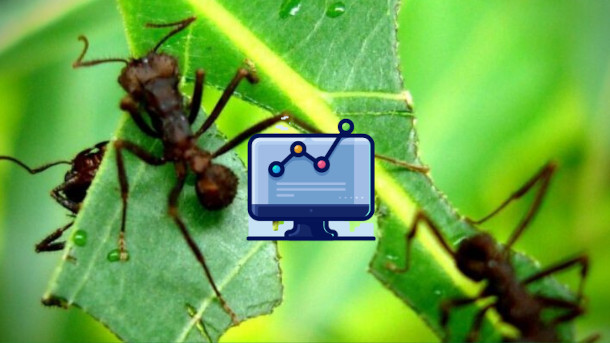Have you heard of leafcutter ants?
Well, while the term may be unfamiliar to the general public, most readers are certainly familiar with army ants.
Well, these ants, as well as the “quenquém” ants, consume more vegetation than any other animal group, even more than mammals.

These species tend to proliferate intensely in pine and eucalyptus forests and feed on the leaves of these trees, which in the early stages of planting, especially in the first 6 months, can compromise the entire forest.
Thinking about combating these pests, the world’s largest paper and cellulose industry decided to invest in technology.
In a project with SciCrop, an analytics module was developed, through our on-demand algorithm services, to optimize the operations of the front lines to combat ants.
The challenge: optimize the management of front-line operations to combat ants

The client plants, manages and harvests eucalyptus forests in forests that total 1.3 million hectares across Brazil, mainly in the North, Northeast and Southeast regions of the country, with management being done by plots in production units – a plot is a lot of a farm, for this company, there are thousands of plots.
The fight against ants is done in two ways: (1) preventive, scheduled to protect the forest during the initial growth phase, where it is most vulnerable; and (2) in the form of control, where annually all the plots are inspected to assess the presence and intensity of the ant population.
The planning of the fight against ants is complex, considering the time windows, different locations, infestation levels, climate (whether it will rain or not), availability of equipment and teams. In one week, a team reaches to treat more than 30 plots! Ensuring that the work sequence is optimal is a big challenge.
Every week, teams use their experiences to, in an artisanal way in spreadsheets, produce the best sequence of operations in the field. It is a time-consuming job, prone to errors and with low possibility of generating alternative scenarios. Changes in conditions demand extraordinary planning that provides suboptimal solutions.
The solution: a module for prioritization and optimization of routes for front lines to combat ants
Through a WEB portal that integrates: (a) information on scheduled preventive activities; (b) ant inspection data; (c) data from operations already carried out; (d) geospatial data of routes and locations of plots; and (e) business rules of priorities; users who plan operations can run the programming of the combat fronts in a few minutes.
The sequences presented in spreadsheets and maps optimize the routes, maximizing operational efficiency.
The result: savings in efforts and resources in pest control through technology

The planning time fell from hours to a few minutes, even allowing scenarios to be simulated.
Reducing the order of 20% in the kilometers traveled by the teams, saving diesel and mainly logistical time.
This time saving generated the main benefit, an increase in operational efficiency of 3.5%, that is, with the same assets, the client is able to combat more areas.
And the solution is ready to scale to other forestry activities at low cost.
Curiosities about the project
More than an operational optimization, the proof of the results of the application of technology to the control of ants led to a technical-scientific advancement for the whole community, represented by the preparation of the article:
The work is a partnership between the two companies and UNESP and will be published in November of 2021 at the “LII Brazilian Symposium on Operational Research”
Did you find it interesting? Does your operation also have complex, multivariable, planning situations that are done manually in spreadsheets? What about implementing an automated intelligent model that increases the operational efficiency of your equipment in the field, reducing costs?
Do like one of the largest players in agriculture in the whole world, bet on analytics and increase your productivity.


